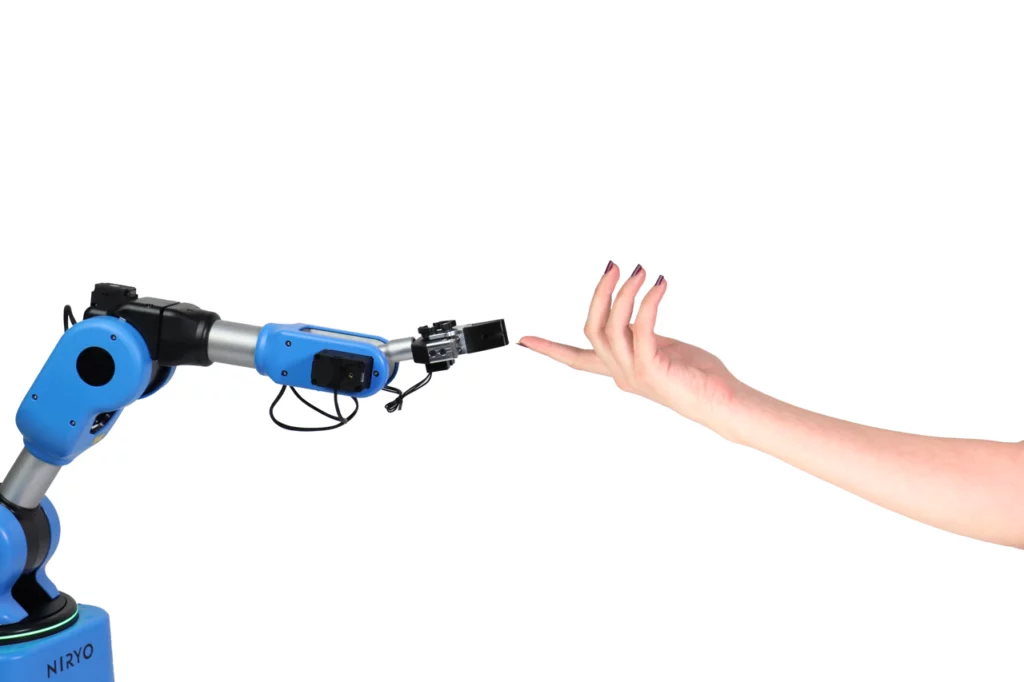The use of automation in industries has become increasingly popular due to the numerous benefits it offers such as increased productivity, efficiency, and cost reduction.
For Niryo, automation goes beyond those objectives, and focuses more on offering more flexibility on one hand and reducing repetitive tedious tasks for humans on the other. Therefore, giving them the opportunity to address their efforts towards creative and innovative missions.
However, many industries still struggle with where to begin the process of automating their operations.
In this article, we will help you get started with implementing technology to your business by outlining the steps to an industrial automation process.
Step 1: are you automation goals clear and defined? Do define!
No one ever thinks of implementing new processes to their business until they feel the urge to do it, right?
So, the first thing you should do is answer the following: why are you opting for this change? What are your objectives? What results and outcomes are you expecting?
Thus, the first step in automating any industry process is to clearly define the goals. This includes understanding the desired outcome of the automation process, what specific tasks need to be automated, and what benefits the industry hopes to achieve from automation.
Defining these goals will help to create a clear roadmap for the automation process.
Step 2: assessing the existing processes
Once the goals have been defined, it is important to assess the existing processes in the industry. This includes identifying the strengths and weaknesses of the current processes and determining where automation can be implemented to improve overall efficiency.
It is also important to identify any potential obstacles that may arise during the automation process.
A good strategy is to check similar industries that recently opted for automation. Or… you can get advice from a robotics company like Niryo (we’ll be happy to help, click here for direct contact)
Step 3: selecting a suitable and smart automation technology
There are various automation technologies available in the market, ranging from simple mechanical systems to advanced robotics using artificial intelligence technology. It is important to select the right automation technology that is appropriate for the specific industry processes being automated.
Factors such as cost, reliability, and scalability should be considered when selecting the technology.
At Niryo, robots are designed to be used in a variety of industrial applications and can be used for automation purposes in some industries. Niryo robots are collaborative robots or “cobots” that are designed to work alongside human operators to perform repetitive or tedious tasks, such as assembly line work, material handling, or quality control inspections.
Niryo showcasing Ned2 for RTBF, one of Belgium’s main TV channel
Overall, if your industry involves repetitive or hazardous tasks that can be performed by a cobot, and if Niryo robots meet the specific requirements of your industry, then they may be a suitable option for automating your industry!
Step 4: developing an implementation plan
After the automation technology has been selected, it is important to develop your implementation plan.
This plan should include a detailed timeline for implementation, a budget, a list of resources and KPIs required for the automation process to be checked later in the process.
The plan should also outline any training or education that will be required for the industry employees to adapt to the selected automation technology.
We should note here that some robots do not require any employee training. For instance, our collaborative robot, Ned2, can be easily implemented and does not require an engineering background or any specific knowledge. Thanks to its application and its control panel, you can program the robot easily.
So if you have a SME, you might consider small collaborative robots. Of course, that depends on other factors as well, as mentioned above.
Step 5: a deep study, a necessity for a sure success
During this phase, the technical specifications of the automation solution are defined in detail. This may include creating software programs (have you heard of Niryo Studio?), developing hardware configurations, designing user interfaces, and integrating various components of the system.
In some cases, the programming and designing part may overlap with the implementation phase, especially if the solution involves agile or iterative development methodologies.
We should note that the deep study phase is a critical step in the development of an automation solution, as it ensures that the technical details of the system are designed and programmed to meet the requirements of the implementation plan. It involves careful consideration of factors such as system performance, reliability, security, and scalability.
Once it is complete, the automation solution can be tested and deployed, and the project can move into the final phases of testing, user training, and closing out the project.
Step 6: implementing the automation process
Once the automation process has been designed, it can be implemented in the industry. This includes installing the new automation technology and on the potential training of employees on how to use it (see our Deutsche Bahn use case for reference). During the initial stages of implementation, it’s vital to closely monitor the process in order to identify any issues that may arise and to make necessary adjustments.
This includes testing the automation technology in a controlled environment and ensuring that it meets the desired goals and objectives.
It is also really important to gather feedback from industry employees who will be working continuously with the automated systems to ensure that the new processes are meeting the production line needs and to anticipate potential complications.
Consider choosing a trustful provider that will assist you the whole process from A to Z.
Everyone agrees: automating industry processes can greatly improve efficiency and productivity, but also flexibility and human-machine collaboration.
Define your objectives, assess your actual process, select the appropriate technology, develop a plan, test the automation process and implement it!
By following these steps, you can successfully implement the automation process and reap the benefits that technology offers.
Remember, it all depends on choosing the right provider and partners!












